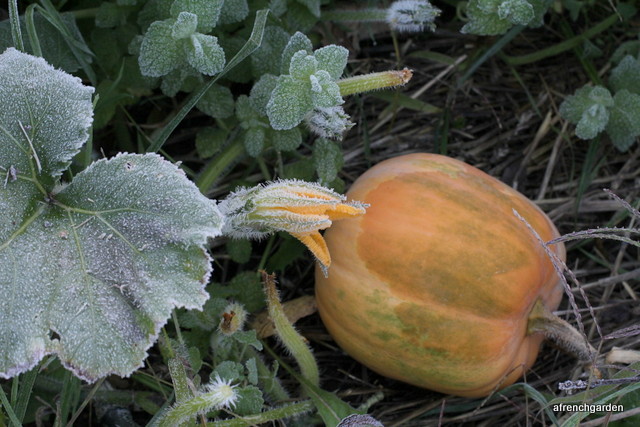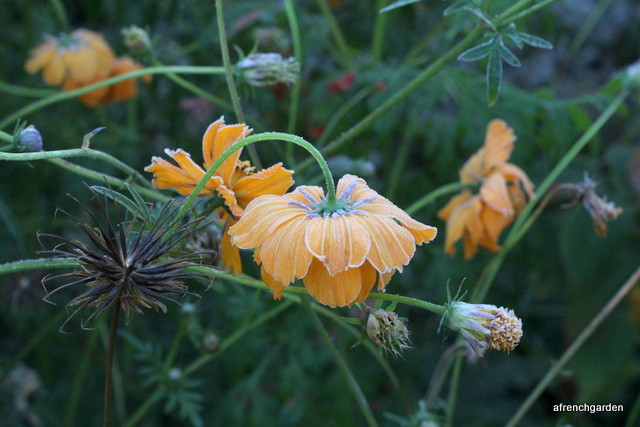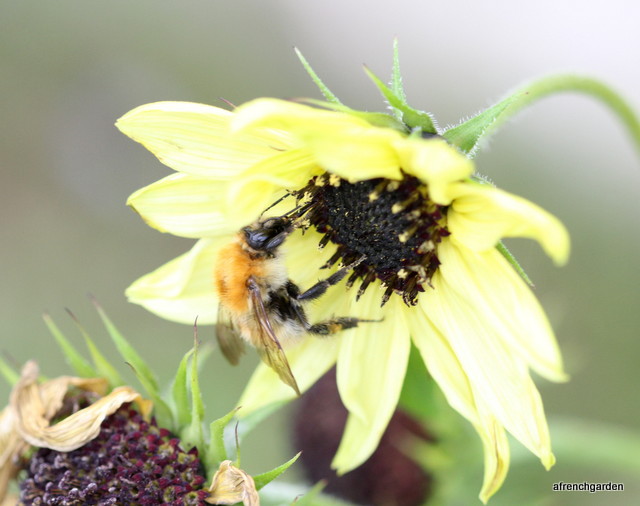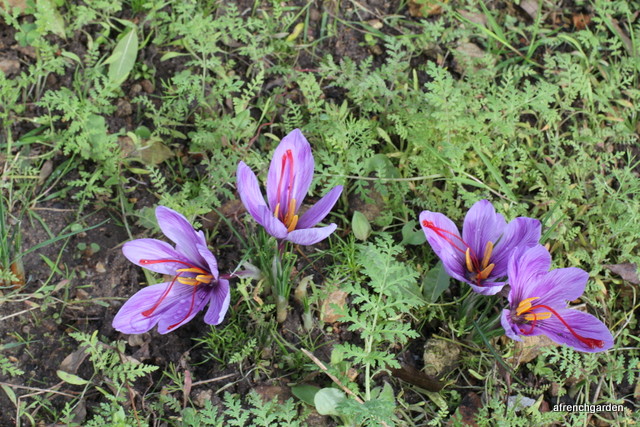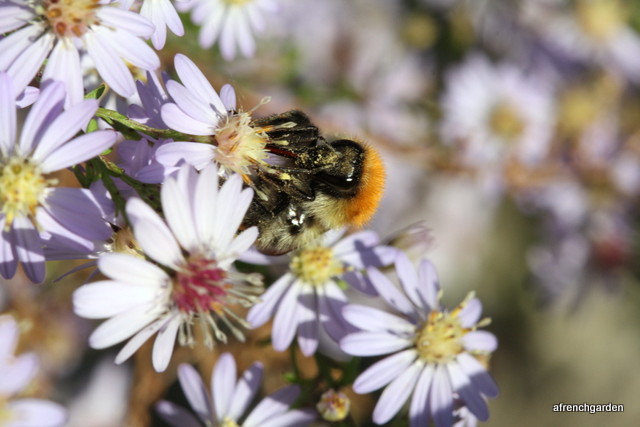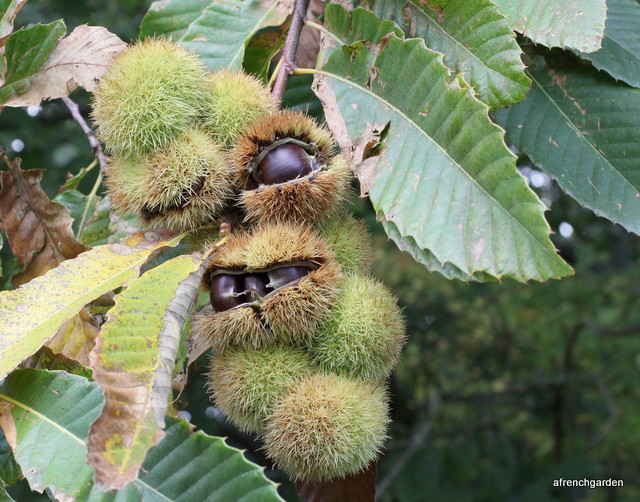The frost arrived this morning.
The frost rimmed fuschia looked like a variegated variety.
There is no time for the pumpkin flower to produce fruit in October but I am sure the bees will be happy to take advantage of its pollen and nectar at this time of year.
All the seasons seem to be confounded at this time of year with frost on the flowers and the seeds providing a treat for the birds.
I enjoy the confusion of the plants with the delphiniums coming up for a second round of flowers.
Sunflowers in October make you think that summer is not really finishing.
But mostly the plants know what they are doing and my saffron started to show two weeks ago. I was rather worried about it as I had sown Phacelia for the bees there in the spring to add natural nitrogen to the soil. Phacelia is one of these handy plants whose roots have nodules sheltering symbiotic bacteria that can fix atmospheric nitrogen. Once the Phacelia had finished flowering I cut it down, contented that not only had I sheltered my Saffron patch from too many weeds but I had fertilised it too. Then the Phacelia started to grow again fueled by seeds dropped during the summer. I wondered if the Saffron would be choked out and I would have killed it with kindness. It seemed to be taking longer but when I checked on my blog last year it was coming up at the same time but the new row of thinned out bulbs was taking slightly longer to flower. So far, the Phacelia bedmate seems to be working – until someone leaves me a comment that Saffron does best in nitrogen poor soil!
I have to pick off the red stigmas of the saffron every day and this afternoon I noticed a carder bumble bee burying its head deep inside the flower in search of nectar. As you pick the saffron its perfume wafts in the air, I suppose it must smell just as good to the bumble bee.
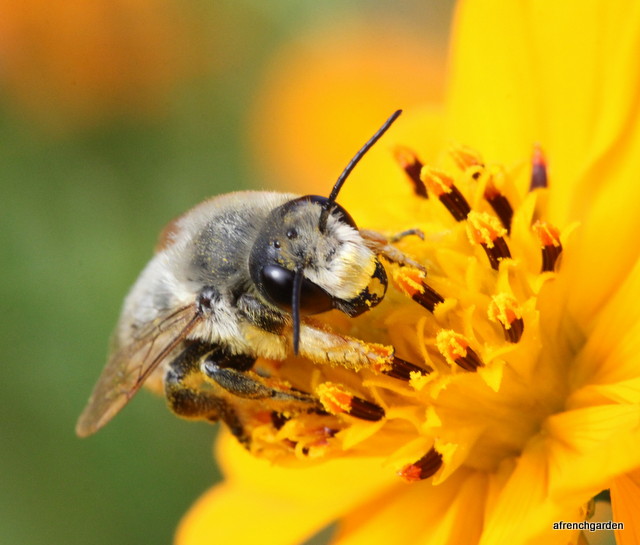
The autumn asters and cosmos are ideal for my solitary bee watching and I was very excited to catch a Megachile that I find so attractive. I think it is a male Megachile willoughbiella (remember I am no expert) and I love his muff like forelegs.
Close by was a Coelioxys bee which is cuckoo bee laying its eggs in the nests prepared by Megachile bees like the one above.
The bumble bees are the most active bees in the garden, flying for longer parts of the day and making the most of the widest variety of flowers.
As for us – we have been spoiled by an exceptionally tasty crop of sweet chestnuts in the woods around us. We have been roasting them in the oven but soon it will be easier to put them to roast in the fire as the nights get colder.



